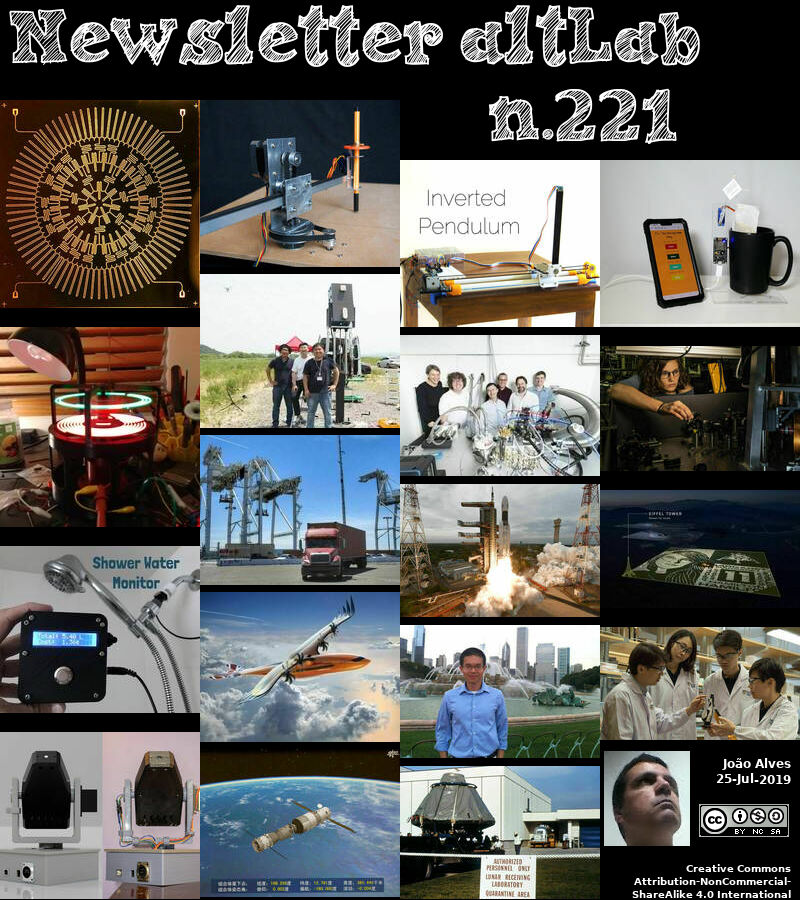2019-07-25 - Nº 221
Editorial
Esta é a Newsletter Nº 221 que se apresenta com o mesmo formato que as anteriores. Se gostar da Newsletter partilhe-a!
Todas as Newsletters encontram-se indexadas no link.
Esta Newsletter tem os seguintes tópicos:
Faz hoje anos que nascia, em 1857, Frank J. Sprague. Este engenheiro americano, inventor foi pioneiro no transporte ferroviário eléctrico. Ele começou a sua carreira no mar na Marinha dos EUA (1878). Mais tarde, ele trabalhou no Brooklyn Navy Yard fazendo planos para lâmpadas eléctricas incandescentes em navios da Marinha, o que levou a juntar-se a Edison em Menlo Park (1883) Ele formou a Sprague Electric Railway Motor Company em 1884, e ficou conhecido como "o pai de tracção ferroviária eléctrica. " quando ele instalou o primeiro sistema de carrinho eléctrico americano (Richmond, Va., 1887). Edison assumiu esta empresa em 1892. Sprague ganhou muitas patentes, muitas para aplicações ferroviárias e diversas ideias, como torradeiras eléctricas, sinais eléctricos, elevadores eléctricos e armamento naval.
Faz também anos hoje que nascia, em 1874, Sergey Lebedev. Este químico russo desenvolveu um método para produção industrial de borracha sintética. Em 1910, enquanto pesquisava processos pelos quais pequenas moléculas combinavam-se para formar grandes, Lebedev fez uma borracha elástica pela polimerização do butadieno (CH2CH-CHCH2), que ele obteve do álcool etílico. A produção de polibutadieno na União Soviética usando o processo de Lebedev foi iniciada em 1932-33, usando batatas e calcário como matéria-prima. Em 1940, a União Soviética tinha a maior indústria de borracha sintética do mundo, produzindo mais de 50.000 toneladas por ano. Durante a Segunda Guerra Mundial, o seu processo de obtenção de butadieno a partir do álcool etílico também foi usado pela indústria alemã de borracha.
Por fim, faz anos hoje que nascia, em 1920, Rosalind Franklin. Esta química, física inglesa e cristalógrafa de raios-X contribuiu para a descoberta da estrutura molecular do ácido desoxirribonucleico (DNA), um constituinte dos cromossomas que serve para codificar a informação genética. Começando em 1951, ela fez fotografias cuidadosas de difracção de raios X do DNA, levando-a a suspeitar da forma helicoidal da molécula, pelo menos nas condições que ela tinha usado. Quando James Watson viu suas fotografias, ele confirmou a forma de dupla hélice que ele e Francis Crick publicaram. Ela nunca recebeu o reconhecimento que merecia por seu trabalho independente.
Nesta semana que passou comemorou-se o 50.o aniversário da ida do Homem à Lua. Uma das figuras mais importantes para que pudesse ser concretizado esse objectivo foi Margaret Hamilton. Esta engenheira de software foi a pessoa responsável pela equipa que desenvolveu software de voo on-board para o programa espacial Apollo da NASA incluindo o da Apollo 11 que aterrou na Lua. Em seu tributo a Google desenvolveu um software que reposicionou os mais de 107.000 espelhos no Ivanpah Solar Facility, no deserto de Mojave, para reflectir a luz da Lua, em vez do Sol, como os espelhos costumam fazer. O resultado é um retrato de 1,4 quilómetros quadrados de Margaret, maior do que o Central Park de Nova York.
Também esta semana, e após uma tentativa falhada, a nave Chandrayaan-2 de fabrico Indiano, foi lançada da Terra em direcção à Lua. Com 3840 kg, a nave faz parte do objectivo da India de desenvolver e demonstrar as principais tecnologias para a capacidade de missão lunar ponta-a-ponta, incluindo pouso suave e movimentação na superfície lunar. Esta missão visa expandir ainda mais o nosso conhecimento sobre a Lua através de um estudo detalhado da sua topografia, mineralogia, composição química da superfície, características termo-físicas e atmosfera levando a uma melhor compreensão da origem e evolução da mesma.
Esta semana que passou também a estação espacial chinesa Tiangong-2 finalmente despenhou-se na Terra. Depois de orbitar a Terra 16.209 vezes, ela ardeu em chamas na reentrada na atmosfera terrestre. O laboratório espacial da China, Tiangong-2, reentrou na atmosfera da Terra sob controle na noite de sexta-feira passada, com uma pequena quantidade de destroços caindo na área marítima predeterminada do Pacífico Sul, informou a Agência Espacial Chinesa.
Na Newsletter desta semana apresentamos diversos projetos de maker. É apresentada também a revista MagPI Nº84 de Agosto e a revista newelectronics de 23 Julho.
 João Alves ([email protected])
João Alves ([email protected])
O conteúdo da Newsletter encontra-se sob a licença  Creative Commons Attribution-NonCommercial-ShareAlike 4.0 International License.
Creative Commons Attribution-NonCommercial-ShareAlike 4.0 International License.
Novidades da Semana
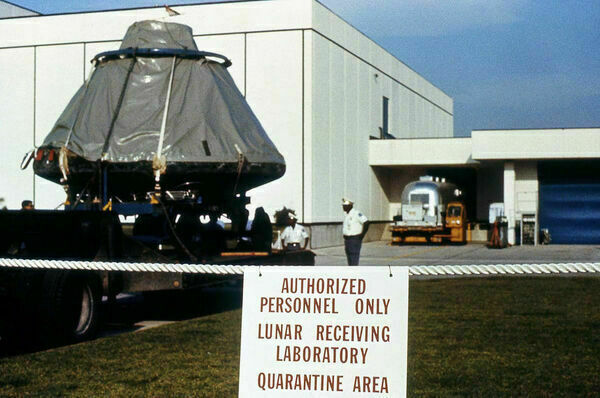
50 Years Ago: Apollo 11 Returns to Houston
"Apollo 11 splashed down 950 miles southwest of Hawaii on July 24, 1969. The Command Module (CM) Columbia and the crew of Neil A. Armstrong, Edwin E. “Buzz” Aldrin, and Michael Collins were successfully recovered and delivered aboard the prime recovery ship the aircraft carrier USS Hornet (CVS-12). Requirements to prevent back contamination of the Earth with any possible lunar microorganisms made the Apollo 11 recovery the most complicated in spaceflight history. Once aboard the carrier, the astronauts entered the Mobile Quarantine Facility (MQF) along with NASA flight surgeon Dr. William R. Carpentier and NASA recovery engineer John K. Hirasaki. The goal was to return the astronauts, Columbia, and the lunar samples and film magazines to the Lunar Receiving Laboratory (LRL) at the Manned Spacecraft Center (MSC), now the Johnson Space Center in Houston, as expeditiously as possible while maintaining the strict biological isolation protocols. Within hours after splashdown, Hirasaki retrieved the Moon rocks contained in two Apollo Lunar Sample Return Containers (ALSRC), film magazines, and other items from Columbia, which was connected to the MQF via a flexible tunnel to maintain biological isolation." [...]
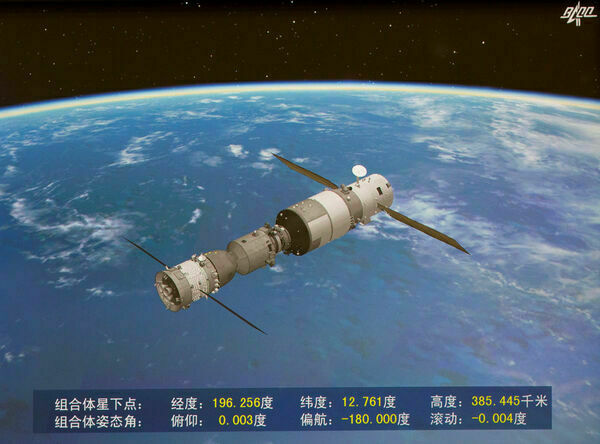
Bidding farewell to Tiangong-2, China prepares for space station
"After orbiting the earth 16,209 times, it burned itself into ashes, flaming out in a dazzling display as its last gift to humanity. China's space lab Tiangong-2 reentered the earth's atmosphere under control Friday night, with a small amount of its debris falling into the predetermined safe sea area in the South Pacific, the China Manned Space Agency said. Tiangong-2's controlled reentry into the atmosphere marks the successful completion of all the tasks in the space lab phase in China's manned space program, said Zhou Jianping, chief designer of China's manned space program. "It's hard to say goodbye to Tiangong-2, but considering reliability- and safety-related factors, we have to drive it out of orbit," said Zhu Zongpeng, chief designer of Tiangong-2 from the China Academy of Space Technology. "To let Tiangong-2 'retire' by choice is to ensure the absolute safety of its departure," Zhu said. "As the first to enter Tiangong-2, I'm happy that the space lab has successfully completed its tasks, though I'm also missing it since it was our home in space," said astronaut Jing Haipeng, who spent his 50th birthday on Tiangong-2 on Oct. 24, 2016." [...]
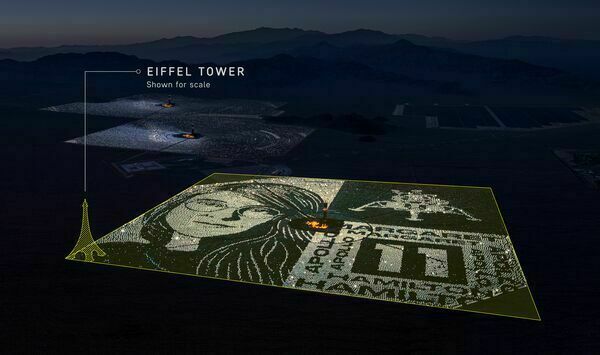
A moonlit tribute to a moon landing icon
"“There was no choice but to be pioneers.” That’s how Margaret Hamilton describes working on the software that put us on the moon. Margaret led the team that developed the onboard flight software for all of NASA’s manned Apollo missions, including Apollo 11’s historic moon landing. With the anniversary of that moon landing approaching, Google set out to shine a light on Margaret’s influence on Apollo, and on the field of software engineering itself. The tribute was created by positioning over 107,000 mirrors at the Ivanpah Solar Facility in the Mojave Desert to reflect the light of the moon, instead of the sun, like the mirrors normally do. The result is a 1.4-square-mile portrait of Margaret, bigger than New York’s Central Park. At the MIT Instrumentation Lab in the 1960s, Margaret was working on code for the Apollo Guidance Computer." [...]

GSLV MkIII-M1 Successfully Launches Chandrayaan-2 spacecraft
"India’s Geosynchronous Satellite Launch Vehicle GSLV MkIII-M1, successfully launched the 3840 kg Chandrayaan-2 spacecraft into an earth orbit today (July 22, 2019). The spacecraft is now revolving round the earth with a perigee (nearest point to Earth) of 169.7 km and an apogee (farthest point to Earth) of 45,475 km. Today’s flight marks the first operational flight of the GSLV Mk III. After a smooth countdown lasting 20 hours, GSLV MkIII-M1 vehicle majestically lifted off from the Second Launch Pad at the Satish Dhawan Space Centre SHAR (SDSC SHAR), Sriharikota at the scheduled launch time of 1443Hrs (2:43 pm) Indian Standard Time (IST) with the ignition of its two S200 solid strap-on motors. All the subsequent flight events occurred as scheduled. About 16 minutes 14 seconds after lift-off, the vehicle injected Chandrayaan-2 spacecraft into an elliptical earth orbit." [...]
Outras Notícias
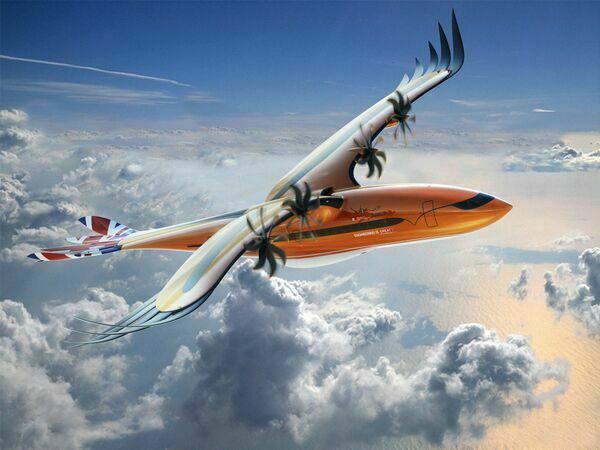
An Airbus futuristic conceptual airliner “takes flight” to inspire next-generation engineers
"Airbus has unveiled a bird-like conceptual airliner design with the goal of motivating the next generation of aeronautical engineers, underscoring how they can make a difference by applying technologies researched at the company in hybrid-electric propulsion, active control systems and advanced composite structures. Revealed at this week’s Royal International Air Tattoo air show in the UK, the theoretical design is a hybrid-electric, turbo-propeller aircraft for regional air transportation. Inspired by efficient mechanics of a bird, it has wing and tail structures that mimic those of a bird of prey, while featuring individually controlled feathers that provide active flight control. "One of the priorities for the entire industry is how to make aviation more sustainable – making flying cleaner, greener and quieter than ever before. We know from our work on the A350 XWB passenger jet that through biomimicry, nature has some of the best lessons we can learn about design." - Martin Aston - Senior Manager at Airbus." [...]
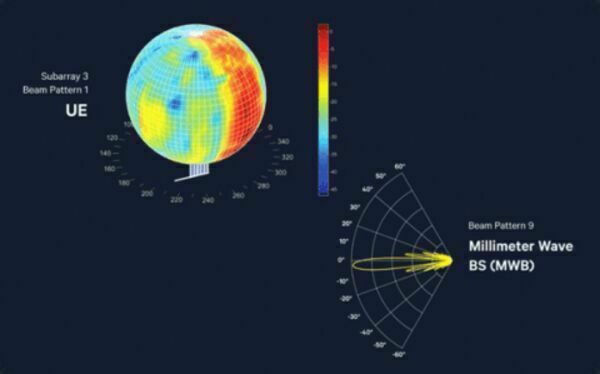
Qualcomm Introduces End-to-End Over-the-Air 5G mmWave Test Network in Europe to Drive 5G Innovation
"Qualcomm Technologies, Inc., a subsidiary of Qualcomm Incorporated, today announced an expansion of its 5G NR testing facilities in Europe to include a new lab dedicated to end-to-end over-the-air (OTA) configurations for 5G NR millimeter wave (mmWave). Located at Qualcomm Technologies’ research and development (R&D) center in Farnborough, UK, the new 5G mmWave lab and test facility will demonstrate and facilitate commercialization of 5G NR mmWave capabilities by allowing OEMs and European operators to test and fine-tune mmWave devices and network configurations. On the heels of the new 5G R&D facility launching, Qualcomm Technologies and Sony have announced that Sony will be the first OEM to take advantage of the lab. Sony will provide pre-commercial mmWave mobile form factor devices to the facility to test the capacity, throughput, latency and reliability of mmWave in multiple deployment scenarios. For dense urban environments, indoor venues and enterprises, mmWave brings massive capacity, multi-Gigabit peak throughput and low-latency connectivity to smartphones, laptops and more. In addition, the ability to carry higher data rates for users makes 5G perfect for deployment in high-density indoor environments such as stadia and shopping centers, often as a complementary technology for sub-6 5G deployments." [...]
Ciência e Tecnologia
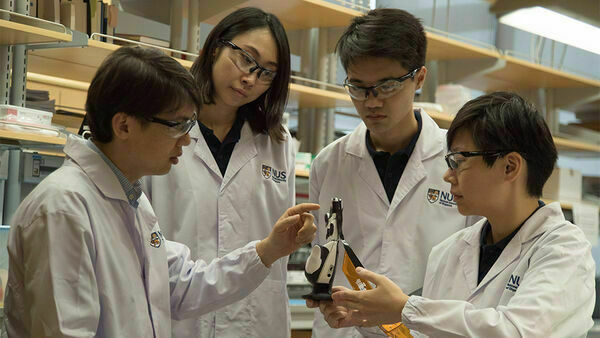
Exceptional sense of touch for robots and prosthetics
"Robots and prosthetic devices may soon have a sense of touch equivalent to, or better than, the human skin with the Asynchronous Coded Electronic Skin (ACES), an artificial nervous system developed by a team of NUS researchers. The new electronic skin system has ultra-high responsiveness and robustness to damage, and can be paired with any kind of sensor skin layers to function effectively as an electronic skin. The innovation, achieved by Assistant Professor Benjamin Tee and his team from NUS Materials Science and Engineering, was first reported in prestigious scientific journal Science Robotics on 18 July 2019. Faster than the human sensory nervous system “Humans use our sense of touch to accomplish almost every daily task, such as picking up a cup of coffee or making a handshake. Without it, we will even lose our sense of balance when walking. Similarly, robots need to have a sense of touch in order to interact better with humans, but robots today still cannot feel objects very well,” explained Asst Prof Tee, who has been working on electronic skin technologies for over a decade in hopes of giving robots and prosthetic devices a better sense of touch." [...]
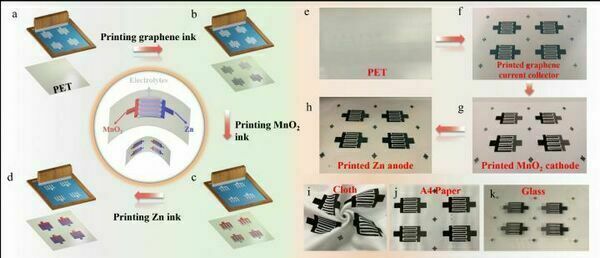
High-safety, Flexible and Scalable Zn//MnO2 Rechargeable Planar Micro-batteries
"Increasing development of micro-scale electronics has stimulated demand of the corresponding micro-scale power sources, especially for micro-batteries (MBs). However, complex manufacturing process and poor flexibility of the traditional stacked batteries have hindered their practical applications. Planar MBs have recently garnered great attention due to their simple miniaturization, facile serial/parallel integration and capability of working without separator membranes. Furthermore, planar geometry has extremely short ion diffusion pathway, which is attributed to full integration of printed electronics on a single substrate. Also, in order to get rid of the safety issues induced by the flammable organic electrolyte, the aqueous electrolyte, characterized by intrinsic nonflammability, high ionic conductivity, and nontoxicity, is a promising candidate for large-scale wearable and flexible MB applications. As the consequence, various printing techniques have been used for fabricating planar aqueous MBs." [...]
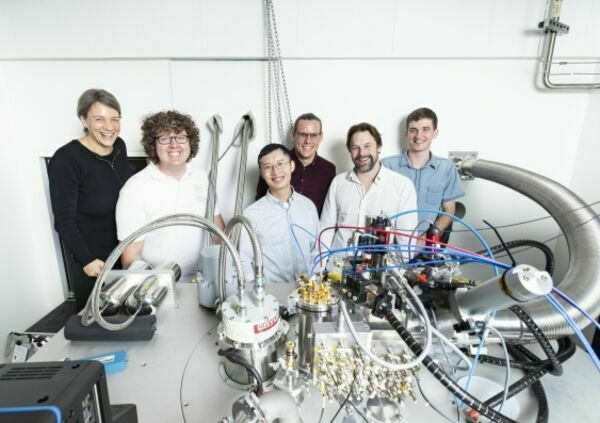
200 times faster than ever before: the speediest quantum operation yet
"A group of physicists at UNSW Sydney have built a super-fast version of the central building block of a quantum computer. The research is the milestone result of a vision first outlined by scientists 20 years ago. A group of scientists led by 2018 Australian of the Year Professor Michelle Simmons have achieved the first two-qubit gate between atom qubits in silicon – a major milestone on the team’s quest to build an atom-scale quantum computer. The pivotal piece of research was published today in world-renowned journal Nature. A two-qubit gate is the central building block of any quantum computer – and the UNSW team’s version of it is the fastest that’s ever been demonstrated in silicon, completing an operation in 0.8 nanoseconds, which is ~200 times faster than other existing spin-based two-qubit gates. In the Simmons’ group approach, a two-qubit gate is an operation between two electron spins – comparable to the role that classical logic gates play in conventional electronics." [...]
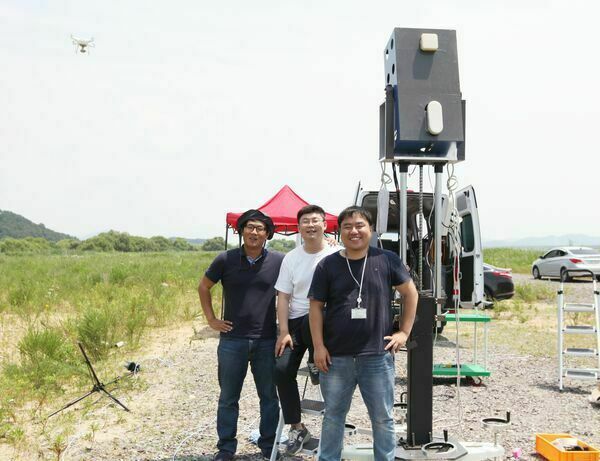
AI Radar System That Can Spot Miniature Drones 3km away
"DGIST announced on Tuesday, July 16 that Senior Researcher Dae-gun Oh’s team in the Collaborative Robots Research Center developed a radar system that can detect subminiature drones that are 3km away. This research is expected to make huge contributions to strengthening domestic industries and defense capabilities by securing a world-class radar sensing technology. As a result of discovering a North Korean drone in Paju in March 2014, South Korea’s Ministry of National Defense has adopted a drone detection radar based on an overseas technology. Since last year, the ministry has devoted itself into building a combat system using drones and training specialized personnel by forming a drone unit to strengthen its defense capability. The necessity of enemy surveillance reconnaissance and the early detection of offensive drones has increased in Korea. Due to the lack of radar detection technology, however, South Korea is using many radar systems from abroad such as drone detection radars from RADA in Israel and Blighter in the U.K. RADA especially owns a superior radar technology performance that can detect drones that are a maximum of 3km away." [...]

Quantum Photonics by Serendipity
"A photonic chip with no less than 128 tunable components on it, proves to be a true ‘Swiss army knife’ with a variety of applications. During her research on measuring light wavelengths using this photonic chip, Caterina Taballione of the University of Twente came across yet another application serendipitously: by sending single photons through the system in stead of continuous light, the optical components can perform quantum operations as well. The same chip works as a photonic quantum processor. Manipulating light on a chip is now possible on a very advanced level, especially using combinations of materials. It is now possible to build optical waveguides with very low losses, using silicon nitride; or very narrow laser light sources using indium phosphide. The chip Caterina Taballione is presenting in her thesis, exists of many components that can either split or combine the light in and from separate channels like in a rail yard." [...]
Search for new semiconductors heats up with gallium oxide
"University of Illinois electrical engineers have cleared another hurdle in high-power semiconductor fabrication by adding the field’s hottest material – beta-gallium oxide – to their arsenal. Beta-gallium oxide is readily available and promises to convert power faster and more efficiently than today’s leading semiconductor materials – gallium nitride and silicon, the researchers said. Their findings are published in the journal ACS Nano. Flat transistors have become about as small as is physically possible, but researchers addressed this problem by going vertical. With a technique called metal-assisted chemical etching – or MacEtch – U. of I. engineers used a chemical solution to etch semiconductor into 3D fin structures. The fins increase the surface area on a chip, allowing for more transistors or current, and can therefore handle more power while keeping the chip’s footprint the same size." [...]
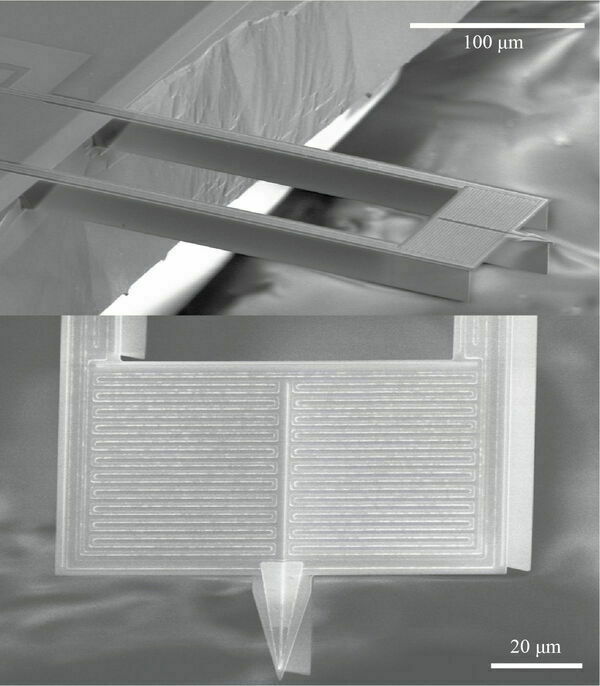
Single molecules can take the heat
"How much heat can a molecule handle? That’s been a tough question to answer until now, but Longji Cui is on the case. The Rice University researcher and his former colleagues at the University of Michigan published the first direct experimental measurements of thermal conductance through a single molecule this week in Nature. Cui, who joined Rice’s Smalley-Curl Institute last year as the J. Evans Attwell-Welch Postdoctoral Fellow, is lead author of the paper that details not only the measurements but the ingenious method he developed to get them. “We basically demonstrated a single-molecule heat conductor, the smallest heat conductor you can imagine,” Cui said. “We combined a scanning tunneling microscope that can manipulate single molecules and atoms and a ultrahigh resolution sensing technique called picowatt (a trillionth of one watt of power) calorimetry.” That allowed them to measure heat-carrying phonons as they moved through one-dimensional chains of atoms in a single molecule at a resolution of about 80 picowatt." [...]
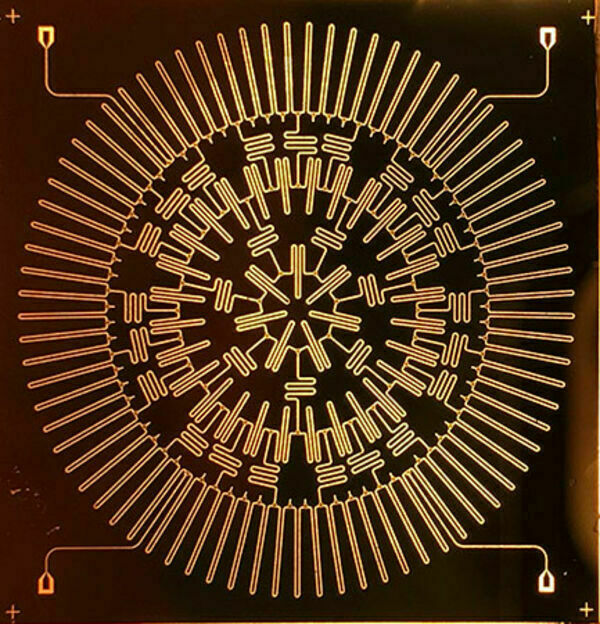
Army project may advance quantum materials, efficient communication networks
"A U.S. Army project exploring novel applications of superconducting resonators has discovered these systems may be used to simulate quantum materials impossible to otherwise fabricate. Additionally, they may provide insights to open and fundamental questions in quantum mechanics and gravity. Scientists at Princeton University, led by electrical engineering Professor Andrew Houck, built an electronic array on a microchip that simulates particle interactions in a hyperbolic plane, a geometric surface in which space curves away from itself at every point. "This research may advance quantum simulation in a way that enables us to not only develop a better understanding of materials relevant to Army goals, but also help us explore questions at the forefront of other fields of Army relevance," said Dr. Sara Gamble, a program manager with the Army Research Office, an element of the U.S. Army Combat Capabilities Development Command's Army Research Laboratory. "In addition to the potential materials applications, the fantastic results obtained by the research team can provide insight into communication networks and ultimately enable the DOD to develop more efficient networking capabilities." The research, published in Nature, used superconducting circuits to create a lattice that functions as a hyperbolic space." [...]
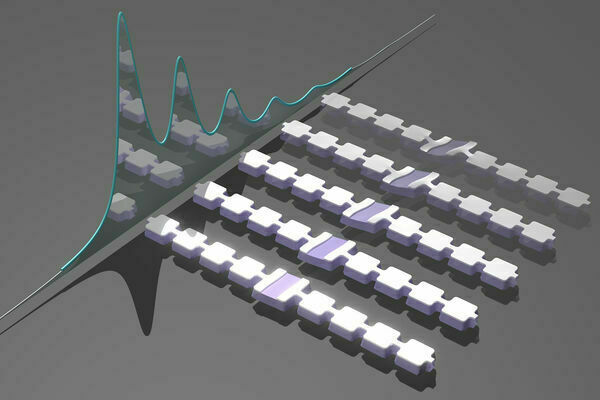
Stanford physicists count sound particles with quantum microphone
"A device that eavesdrops on the quantum whispers of atoms could form the basis of a new type of quantum computer. Stanford physicists have developed a “quantum microphone” so sensitive that it can measure individual particles of sound, called phonons. The device, which is detailed July 24 in the journal Nature, could eventually lead to smaller, more efficient quantum computers that operate by manipulating sound rather than light. “We expect this device to allow new types of quantum sensors, transducers and storage devices for future quantum machines,” said study leader Amir Safavi-Naeini, an assistant professor of applied physics at Stanford’s School of Humanities and Sciences. Quantum of motion First proposed by Albert Einstein in 1907, phonons are packets of vibrational energy emitted by jittery atoms. These indivisible packets, or quanta, of motion manifest as sound or heat, depending on their frequencies." [...]
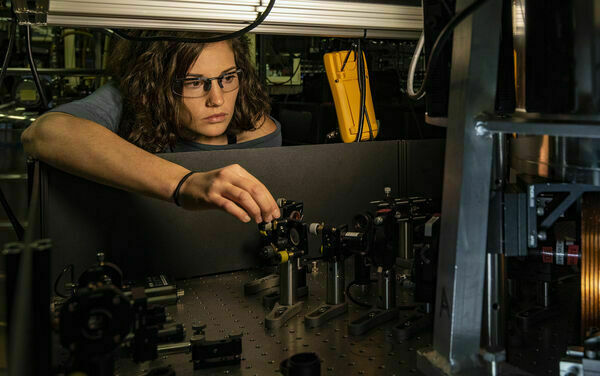
NIST Physicists Create Record-Setting Quantum Motion
"Showcasing precise control at the quantum level, physicists at the National Institute of Standards and Technology (NIST) have developed a method for making an ion (electrically charged atom) display exact quantities of quantum-level motion — any specific amount up to 100 packets of energy or “quanta,” more than five times the previous record high of 17. Quantum mechanics, the fundamental theory of the atomic world, states that energy is released or absorbed in tiny parcels, or packets, called quanta. Atoms release light energy by radiating photons, or quanta of light. When caught in a trap by researchers, atoms’ motional energy is carried by phonons, or quanta of motion. In addition to creating single numbers of quanta, the NIST team controlled the pendulumlike motion of their ion to simultaneously exhibit two different amounts of motional quanta: zero (minimum motion) plus any number up to 18. Such a “superposition” of two states is a hallmark of the curious quantum world." [...]
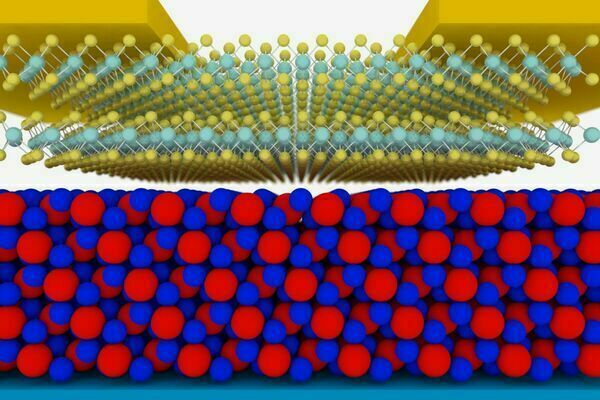
Ultrathin Transistors for Faster Computer Chips
"An important breakthrough in transistor technology has been achieved at TU Wien: With the help of novel insulators, high-quality transistors can be produced using two-dimensional materials. For decades, the transistors on our microchips have become smaller, faster and cheaper. Approximately every two years the number of transistors on commercial chips has doubled – this phenomenon became known as "Moore's Law”. But for several years now, Moore’s law does not hold any more. The miniaturization has reached a natural limit, as completely new problems arise when a length scale of only a few nanometers is approached. Now, however, the next big miniaturization step could soon become possible - with so-called “two-dimensional (2D) materials” that may consist of only a single atomic layer." [...]

Emory mathematician to present a proof of the Sensitivity Conjecture
"The Sensitivity Conjecture has stood as one of the most important, and baffling, open problems in theoretical computer science for nearly three decades. It appears to have finally met its match through work by Hao Huang, an assistant professor of mathematics at Emory University. Huang will present a proof of the Sensitivity Conjecture during the International Conference on Random Structures and Algorithms, set for Zurich, Switzerland, July 15 to 19. “I’ve been attacking this problem off and on since 2012,” Huang says, “but the key idea emerged for me just about a week ago. I finally identified the right tool to solve it.” Huang posted the proof on his home page and it soon generated buzz among mathematicians and computer scientists on social media, who have praised its remarkable conciseness and simplicity. The Sensitivity Conjecture relates to boolean data, which maps information into a true-false, or 1-0 binary." [...]

Making the Invisible Visible: New Sensor Network Reveals Telltale Patterns in Neighborhood Air Quality
"Black carbon, commonly known as soot, is a significant contributor to global warming and is strongly linked to adverse health outcomes. Produced by the incomplete combustion of fuels – emitted from large trucks, trains, and marine vessels – it is an air pollutant of particular concern to residents in urban areas. Sensors available on the market today are expensive, making black carbon difficult to track. Researchers at the U.S. Department of Energy’s Lawrence Berkeley National Laboratory (Berkeley Lab), collaborating with UC Berkeley, have developed a new type of sensor network that is much more affordable yet capable of tracking this particulate matter. With more than 100 custom-built sensors installed across West Oakland for 100 days, the team created the largest black carbon monitoring network to be deployed in a single city. A full description of the 100×100 air quality network was published in the journal Environmental Science and Technology." [...]
Documentação
A documentação é parte essencial do processo de aprendizagem e a Internet além de artigos interessantes de explorar também tem alguma documentação em formato PDF interessante de ler. Todos os links aqui apresentados são para conteúdo disponibilizado livremente pelo editor do livro.
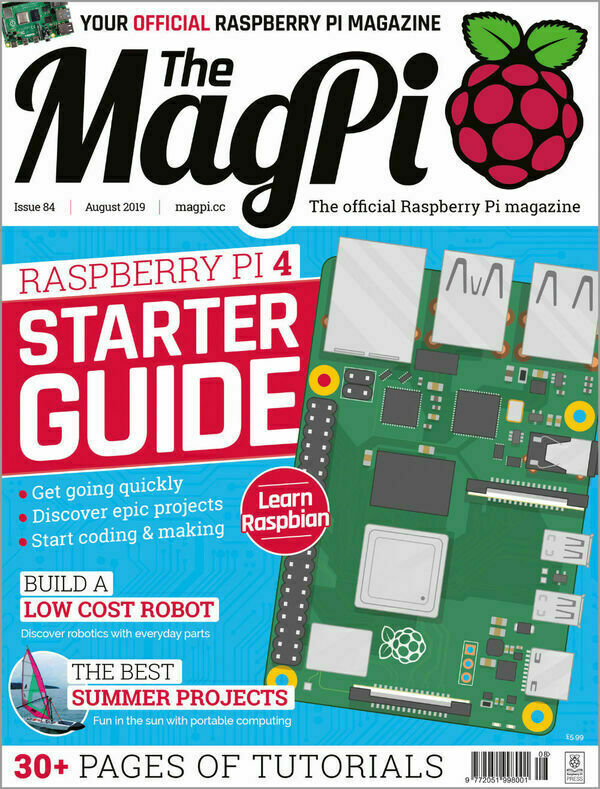
The MagPI 84
"Get your Raspberry Pi 4 Starter Guide in The MagPi magazine issue #84. Get to know your Raspberry Pi 4 with our in-depth starter guide. We’ll help you take the first steps with your new computer: discover the best way to set up and use a Raspberry Pi 4. Raspberry Pi 4 comes with a whole new operating system, called Raspbian ‘Buster’. Our starter guide has advice on the new features, and how to get the most from Buster. Coding and making with Raspberry Pi is the most fun you can have with a computer." [...]

newelectronics 23 Julho 2019
"New Electronics is a fortnightly magazine focusing on technological innovation, news and the latest developments in the electronics sector. Downloadable as a digital page turner or pdf file, or offered as a hard copy, the New Electronics magazine is available in a format to suit you. " [...]
Projetos Maker
Diversos Projetos interessantes.
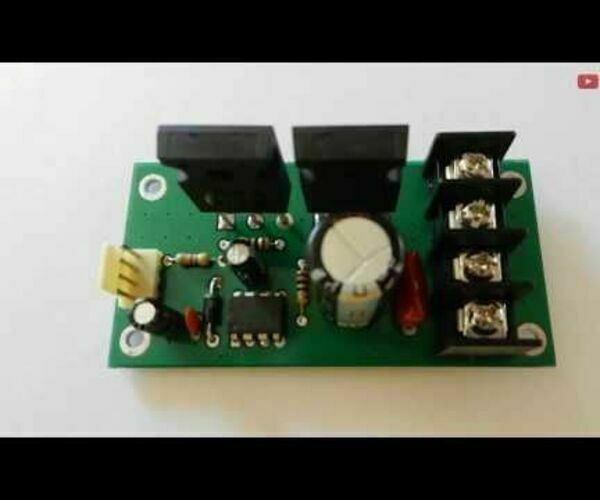
DC Motor Driver Using Power Mosfets
"DC motors are everywhere, from hobby applications to robotics and industrial areas. Therefore there is wide usage and request for suitable and powerful DC motor drivers. In this article, we will learn to build one. You can control it using a Microcontroller, an Arduino, a Raspberry Pi or even a standalone PWM generator chip. By using a proper heatsink and cooling methods, this circuit can handle currents up to 30A. " [...]

Temporized Traffic Light
"You'll learn how to construct and to obtain the files of temporized traffic signal. Introduction One of the big problems when we programming Arduino is to create or develop projects based on problems in our around. Thinking about this, we create a printed circuit board of the traffic light with other features. In this article, we'll teach how to create a printed circuit board to simulate a temporized traffic light. Through this PCB you can create several activities with Arduino Board. " [...]
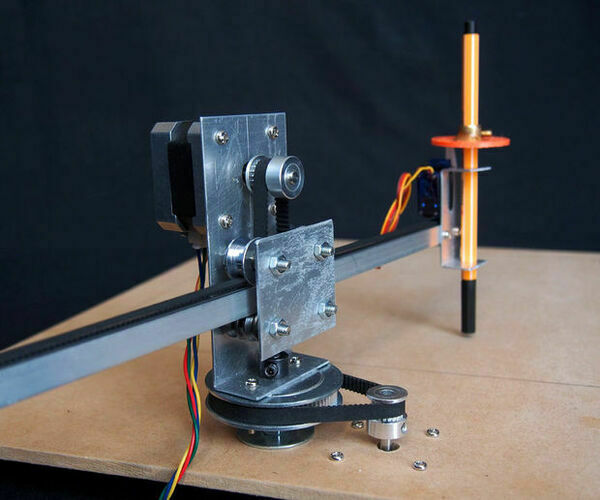
CNC Actuator Plotter
"This instructable explains how to make a CNC plotter using an Arduino Uno R3, an SG90 servo, two NEMA 17 stepper motors, a few pulleys, and a short length of aluminium extrusion. Construction is simple ... all you need are a few drills, a sharp knife, and a hacksaw. The plotter has an on-board interpreter that recognises the g-code output from Inkscape. All that is required is an XON XOFF terminal that can send text-files one line at a time. The plotter may also be controlled using a cell-phone or tablet as explained in my instructable https://www.instructables.com/id/CNC-Graphics-Tab... Specific XY coordinates for this plotter are reached by varying the angle and length of a linear actuator." [...]
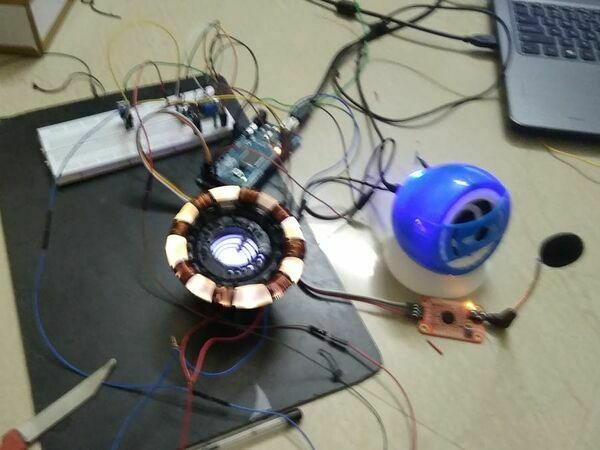
J.A.R.V.I.S with DIY Arc Reactor
"J.A.R.V.I.S, a speech assistant prototype that could give a feel of an AI by linking it with my DIY arc reactor in Iron Man! Story This project had been made out of fun idea! It is basically just a speech recognition prototype! It was actually made with an Arduino Mega, a voice recognition module and an SD card module. Since I had been inspired by the Iron Man, I wanted to make this project sound like J.A.R.V.I.S. Hence I loaded several voice tracks that could sound exactly like it and to add the Wow factor, I just linked my DIY arc reactor, just to make the whole setup like automated with A.I." [...]
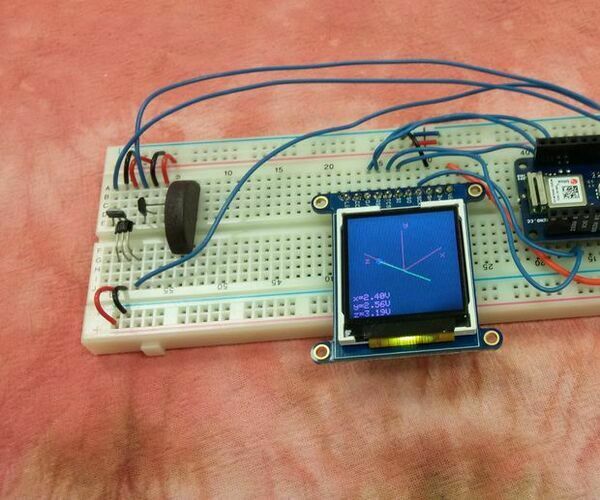
Arduino Magnetometer
"What are we building? Humans can't detect magnetic fields, but we use devices that rely on magnets all the time. Motors, compasses, rotation sensors, and wind turbines, for example, all require magnets for operation. This tutorial describes how to build an Arduino based magnetometer that senses magnetic field using three Hall effect sensors. The magnetic field vector at a location is displayed on a small screen using isometric projection. What is an Arduino?" [...]

Blinds Control With ESP8266, Google Home and Openhab Integration and Webcontrol
"In this Instructable I show you how I added automation to my blinds. I wanted to be able to add and remove it, so all installation is clip on. The main parts are: Stepper motor Stepper driver controlled bij ESP-01 Gear and mounting bracketI controll the blinds via Google Home, my Openhab server and a website Supplies:I bought most components form Aliexpress ESP8266: ESP-01 Stepper motor A4988 stepper driver Chain for controlling blinds Buck converter Power supply I designed and printed the gear and mounting bracket myself" [...]
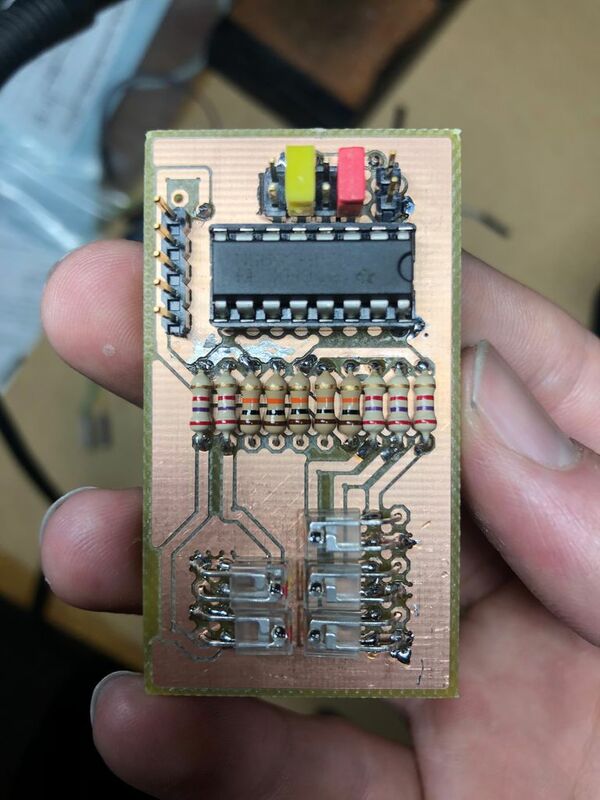
Infrared Dice Sensor
"My name is Calvin and I will show you how to make an Infrared dice sensor and explain how it works. I am currently a Taylor University student studying Computer Engineering and my team and I was asked to design and build a mechanism that can sort any object that can fit in a 1in square. We could have taken the easy route and chosen to sort m&m's using a simple color sensor, but we decided to go above and beyond and sort dice by the number shown. After countless hours of trying to find a guide on how to read the face of the dice I ran into this link here: https://makezine.com/2009/09/19/dice-reader-versio... This link, however, did not give me much more than the idea on how to read the face of the dice, so using the idea that was provided, I went on my way to build and develop a sensor that can be connected with an Arduino with ease and can read the face of the dice as accurately as possible, thus giving us this Infrared Dice Sensor. Supplies:Now on to the supplies: You will need: 1 x Arduino Uno 5 x IR Receivers 5 x IR Emitters https://www.sparkfun.com/products/241 5 x 270 ohm resistors 5 x 10k ohm resistors 1 x 74HC595N chip various male headers 1 x Prototype board (if you are not getting a custom milled board)" [...]

12V USB Charging Station
"This project is an attempt to build a practical USB charging station that you can connect to your solar setup or car battery to allow the simultaneous charging of several USB devices, in my case for camping trips. The unit supports six high current USB ports and one cigarette lighter socket, for the late-night top-up of inflatable mattresses. A display is included to keep an eye on the voltage and current and a 16A circuit breaker for protection against eager cigarette socket users. A pack of 18650's also found its way into the box at the end of the project, because there was space, and can be handy a quick phone top-up if an external power source is not available. Supplies:16 A Circuit Breaker (Qty: 1) 3S 18650 BMS (Qty: 1) Dual 12V in 4.2A USB Charger Socket (Qty: 3) XT60 Panel Mount Connector (Qty: 1) Multi-function Panel Meter, 20A (Qty: 1) Cigarette Lighter Socket (Qty: 1) M3 Inserts (Qty: 4) M2 x 6mm Screws (Qty: 2) M3 x 10mm Hex Screws (Qty:4)" [...]

Arduino MIDI Chiptune Synthesizer
"Relive the fun of early computer game music with an authentic 8-bit chiptune synthesizer, which you can control over MIDI from the comfort of any modern DAW software. This simple circuit uses an Arduino to drive an AY-3-8910 programmable sound generator chip (or one of its many clones) to recreate that 1980's sound. Unlike the many designs that need specialised software to edit music, this looks like a standard USB MIDI device. The synthesizer has a clever algorithm which tries to keep the most musically-relevant notes playing; in many cases you can throw un-edited MIDI files straight at it and the tune comes right out. Total cost should be about 20. " [...]
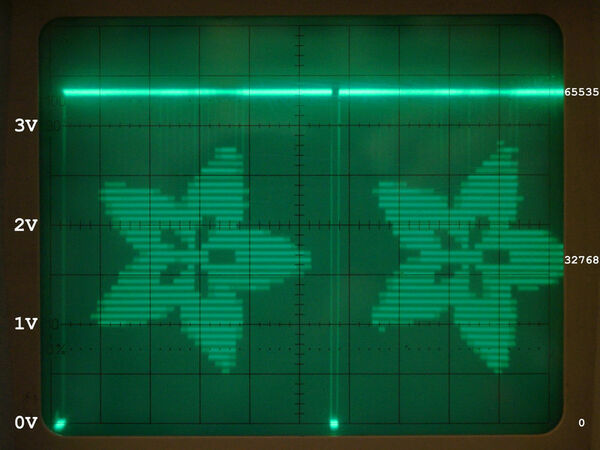
Making oscilloscope images with DACs
"This project demonstrates two techniques for making images on an oscilloscope using CircuitPython and the analogue output(s) found on many Adafruit boards. The first is an unusual technique using the oscilloscope's trigger feature and normal x-axis timebase with a single digital to analogue converter (DAC) output on a Circuit Playground Express (CPX) board. A computer running Python with the imageio library is required to convert bitmaps into a suitable format for playback on the CPX board. The second is the more common X-Y vector technique, using a PyGamer with its two DAC outputs. Any SAMD21 (M0) or SAMD51 (M4) board can be used. No additional hardware is required beyond connections to the oscilloscope probes." [...]

Save Water & Money With the Shower Water Monitor
"Which uses more water - a bath or a shower? I was recently thinking about this question, and I realized that I don't actually know how much water is used when I shower. I know when I'm in the shower sometimes my mind wanders, thinking about a cool new projects idea or trying to decide what to have for breakfast, while water is just gushing down the drain. It would be a lot easier to reduce my water consumption if I actually knew how many litres I was using each time! I did a bit of research, and found that different shower heads can use anywhere from 9.5 litres (2.5 gallons) per minute to less than 6 litres (1.6 gallons) per minute, if you have a flow restrictor installed. A very old shower could use even more water." [...]
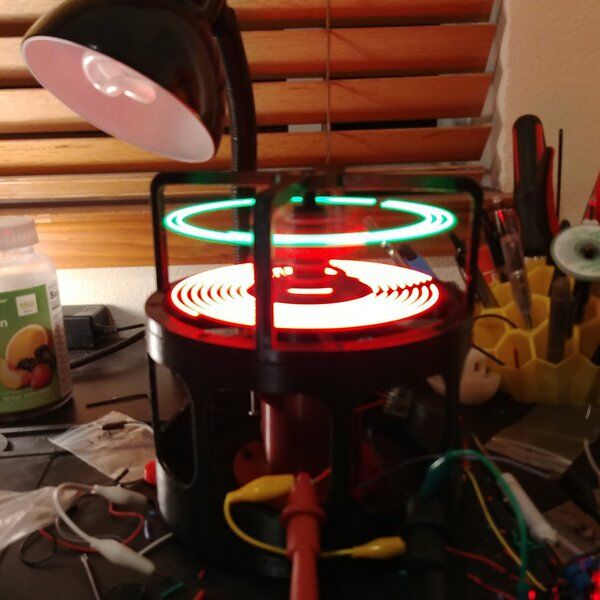
Volumetric POV Display
"A 3D rotational persistence of vision display DESCRIPTION A previous project of mine was a 6x6x6 led cube, and while I was pretty happy with the way it came out, I thought a display with more resolution would be cooler. However, the exponential increase in effort required to construct a larger in constructing a larger LED cube put me off on the idea. Making a rotational display like this seemed like a good way of getting the extra resolution I wanted, without having to spend lots of effort soldering hundreds of leds. So it felt like a good project to take on. If I can iron out all the bugs with the design, I'd really like to streamline the overall design to make it easier to produce. As a longer term goal for the project, I really like the idea of making a kitable version of this." [...]
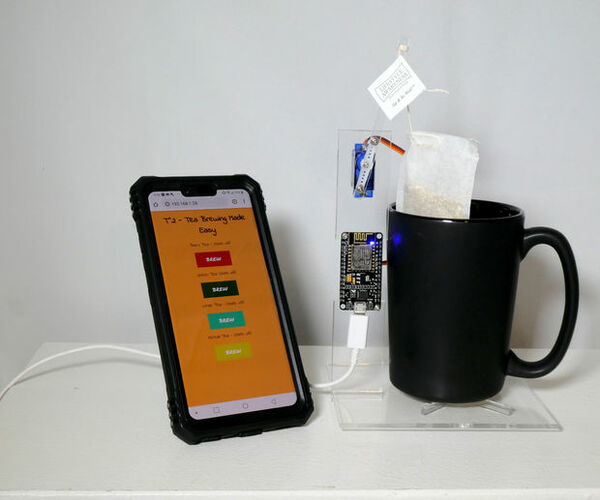
T2 - the Tea Bot -Tea Brewing Made Easy
"The tea bot was made to help the user brew their tea to the recommended brewing time. One of the design goal was to keep it simple. An ESP8266 is programmed with a web server to controls a servo motor. The ESP8266 Web Server is mobile responsive and it can be accessed with any device that has a browser in your local network. The user will be able to select the type of tea and the tea bot will steep the tea for the recommended time. Supplies:1 x SG90 servo motor 1 x ESP8266 CP2102 4 x M2 screw (6 to 8 mm long) & nuts 0.1" thick acrylic or wood Optional:Acrylic Cement" [...]
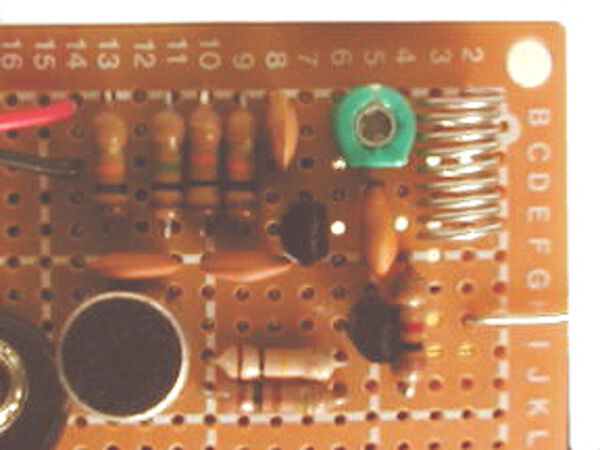
Easy to Build FM Transmitter
"Learn to build your own mini FM transmitter. This fun project will show you how to build a mini broadcasting device that can transmit an audio signal up to a quarter mile to any FM receiver. It's easy to build and a good learning experience. Having a range of up to a quarter mile, it's great for a house security system, baby monitoring device or simply a listening gadget that you can place anywhere. C4 is a small, screw-adjustable, trimmer capacitor. Set your FM receiver for a clear, blank space." [...]
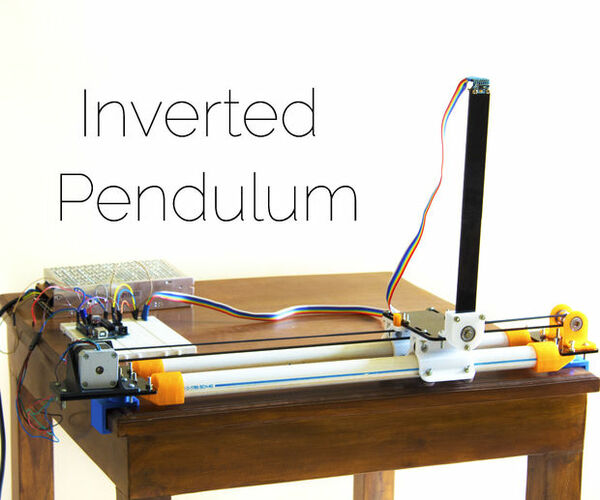
Inverted Pendulum: Control Theory and Dynamics
"The inverted pendulum is a classic problem in dynamics and control theory that is generally elaborated in high-school and undergraduate physics or math courses. Being a math and science enthusiast myself, I decided to try and implement the concepts that I learned during my classes to build an inverted pendulum. Applying such concepts in real life not only helps strengthen your understanding of the concepts but also exposes you to a whole new dimension of problems and challenges that deal with practicality and real-life situations that one can never encounter in theory classes. In this instructable, I will firstly introduce the inverted pendulum problem, then cover the theory aspect of the problem, and then discuss the hardware and software required to bring this concept to life. I suggest you watch the video that is attached above while going through the instructable which will give you a better understanding. And finally, please don't forget to drop a vote in the 'Classroom Science Contest' if you liked this project and feel free to leave any questions in the comment section below." [...]

PocketAdmin (rev 1.2)
"This is an open source keystroke injection device, similar to a well known USB rubber ducky made by hak5. It looks and feels like an ordinary USB flash drive but acts as a keyboard that types in a preprogrammed payload. This can be very useful for automating sysadmin tasks or in penetration testing applications. The device here is intended to be a much improved verison of USB rubber ducky, namely: Made from inexpensive off-the-shelf parts, with not only open source firmware, but hardware design files as well. This allows the user to do substantial modifications to the design, as well as provides an option to build these yourself. Has a built-in interpreter (compatible with existing ducky script) which takes text files directly, so you never have to install any encoder software and keep converting payload.txt to inject.bin." [...]
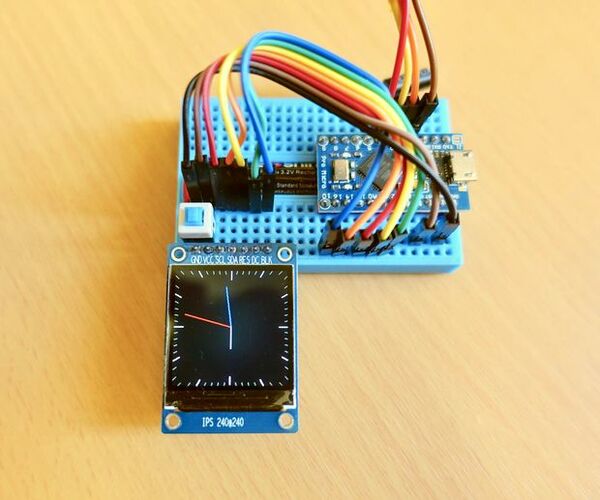
Arduino Watch Core
"This instructables show how to use a square color display and Arduino dev board build a watch core. This will cover the topics of dev board selection, display selection, extra modules selection, UI design, performance tuning and power saving. Note: I have prototyped some Arduino Watches few years ago. But the hardware sizes at that time are too big to squeeze into a watch case, so the project have suspended at that time. " [...]
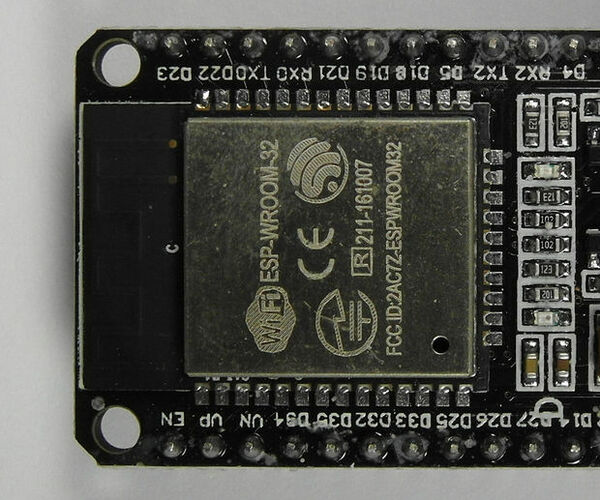
ESP32 Tutorial: Some Built-In Capabilities
"The ESP32s, are a series of inexpensive microcontrollers, introduced in the last quarter of 2016. They are powerful systems on a chip (SoC) and can replace the ESP2866, and perhaps one might say even the Arduino UNO. Athough, clearly they are much more complex to use. An ESP32 development board contains a 32-bit Tensilica Xtensa LX6 chip, with both dual-core or single-core options available now (and perhaps more options available in the future). They are made using 40 nm fabrications. These chips have PWM, ADC, and DAC capabilities, as well as I2C, SPI, UART, Standard Bluetooth, Bluetooth Low Energy, CAN 2.0, and 2.4 Ghz WiFi interfaces." [...]
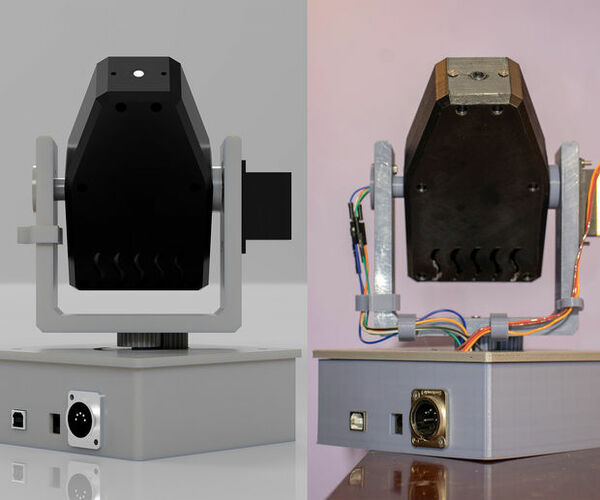
Mover3D: the 3D Printed, DMX Controlled, Desktop Moving Light
"This is Mover3D. A 3D printed moving light using the industry standard DMX-512 communication protocol for lighting control. Thus, it can plug in to any standard lighting control console, creating the ultimate lighting desk toy. Mover3D features full RGBW color mixing and 180 of pan and tilt. This is the MK1 of Mover3D. A larger, better MK2 is in the works, featuring a 14,000 lumen (white only) output with slip rings and stepper motors for 360+ pan and tilt, but that is quite a way off." [...]
That's all Folks!



